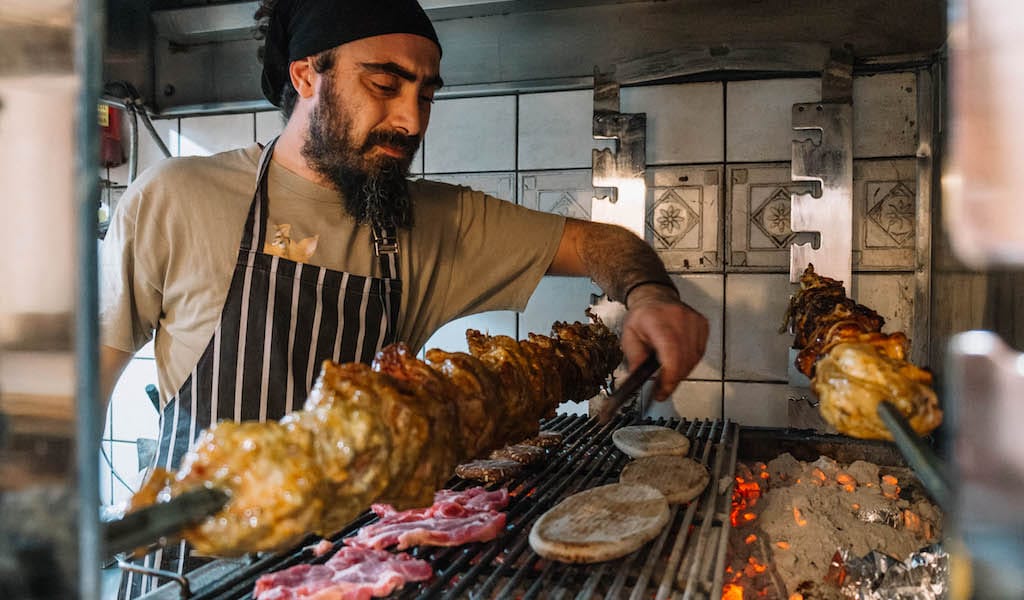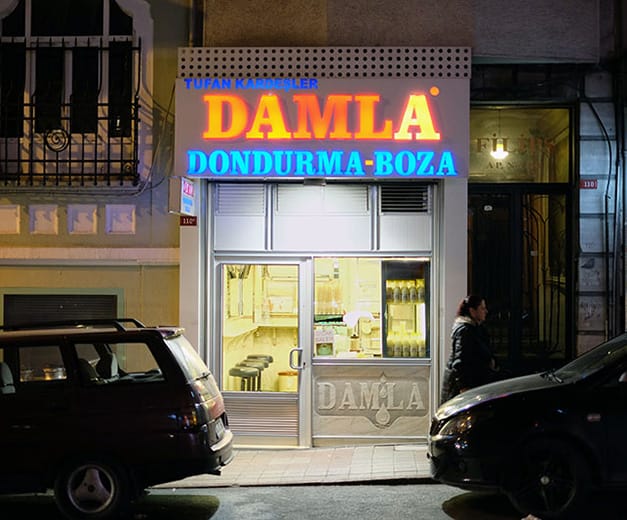Update: This spot is sadly no longer open.
Anyone who has spent time in the former Soviet republics of Central Asia (or, “the ’Stans”) will have developed a deep and lasting appreciation for the cuisine of the Uighur, a Turkic people spread across the region whose homeland, Uygurstan, lies across the border in western China. In Dushanbe, faced with the prospect of another oily pile of plov, Central Asian people and visiting foreigners alike gleefully opt for Uighur (romanizations vary) cuisine, whose hand-pulled, bouncy noodles, lagman, are ever-present from Shimkent to Khujand, yet still exotic.
We’ve chronicled the Uighur scene in Istanbul’s Zeytinburnu, where excellent lagman is to be found, but sometimes this neighborhood, in the city’s south, feels as distant as the Kashgar oasis itself.
Suffering from a serious lagman deficiency last summer, we took a casual meander around the backstreets near the Caucasus-bound bus station of Aksaray that turned into a moment of important discovery. The writing was right there on a leather-bound menu perched in the window: Lezzetli Uygur Yemekleri. We’d found Turkistan Uygur Lokantası and its simple yet enticing promise of “Delicious Uighur Food.”
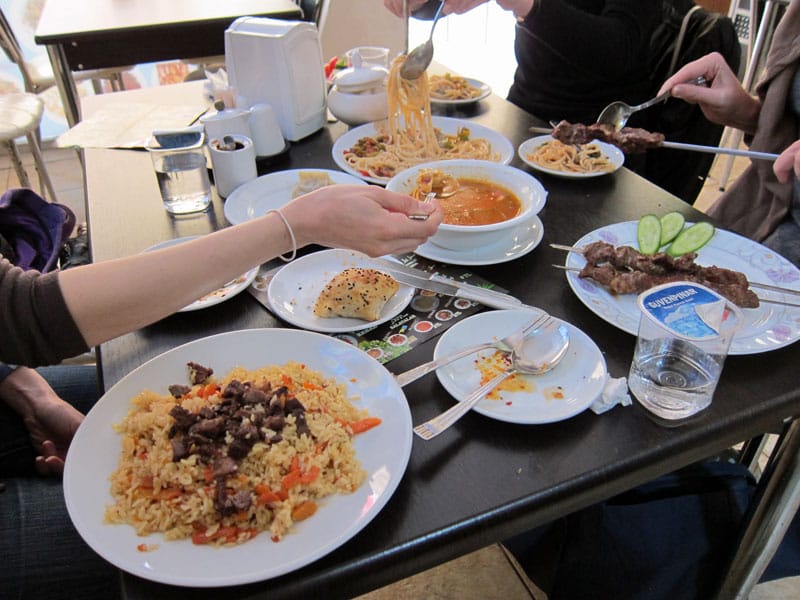
The lunch-rush crowd here looked largely Uighur, and they were all greeted with a generous salam by the owner Ubeydullah, whose long beard brushed the keys of the cash register as he bowed slightly in greeting. Ubeydullah owns two other Uighur restaurants in Istanbul, making him the foremost Uighur restaurateur in town.
A shy, young Uighur waiter explained nearly every dish on the menu in the following terms: “It’s like the Turkish one [that it bears striking similarity to], but different.” Kazan kebab? Lamb skewers? Chicken sote? All quite different indeed, we’d found on previous visits, but not the dishes we’d cross town for. We didn’t need him to guide us toward the two-page spread of lagman varieties while we munched on somsa, a crunchy dough shell speckled with sesame seeds and stuffed with a steamy stew of lamb and onions.
From the lagman-related dishes we had suyak as, a lamb and dumpling soup composed of murky, meaty stock with thin dough squares, bits of lamb and shreds of spinach and chopped red bell peppers. Aci lagman kormasi is nearly the exact same ingredients stir-fried with soft half-inch cuts of lagman noodles, a spare, thickened sauce in place of the broth.
The lagman spesiyal is the connoisseur’s choice, in which a bowl of plain noodles is served beside a separate bowl of the topping, once again made of the previously encountered materials. The topping here is a pleasing counterpoint of tender slow-cooked meat and surprisingly lively, less-cooked vegetables sitting in a peppery gravy, but lagman is all about the noodles. Approaching the bowl of unadorned noodles, it’s hard not to see what the fuss is about.
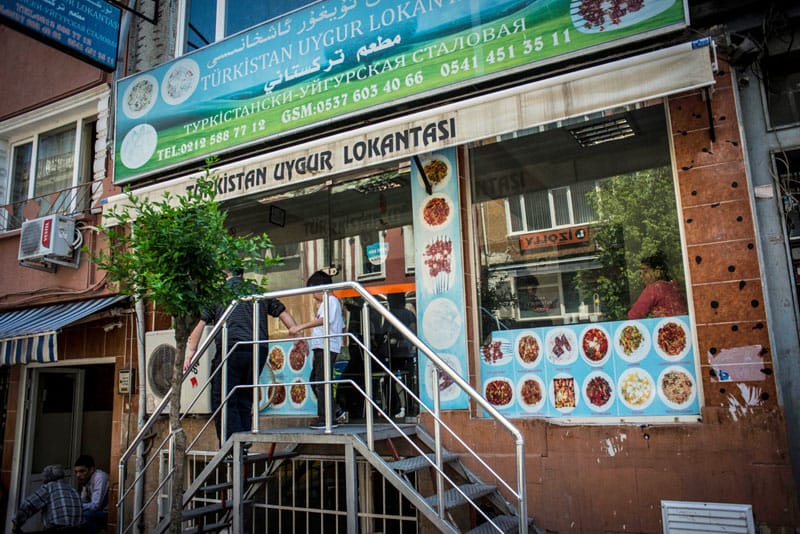
We piled a few coils of beautifully irregular lagman on the topping. When held up with a fork they looked like a satellite photo of the Amu Derya river – all swells, narrows and bends. Spinning the lagman over the topping with a fork, Italian-style, produced the best results for us. The noodles came away fully sauced, wrapped around a nest of meat and peppers – a perfect bite. Heap or rake the topping over your noodles, or drag your noodles through the topping for just a slick of the spicy gravy – you can’t make a mistake with this dish. It is just as reliably satisfying here in Aksaray as diners surely recall it in Almaty or Karaganda. For people in this part of Aksaray who are not initiated in the ways of the Uighur kitchen, Vera Café, a Russian restaurant across the street, might be a tempting option, but let’s face it, everyone in this part of Aksaray knows better, even the Russians.
Editor’s Note: This article originally appeared on Istanbul Eats. You can read the original here.
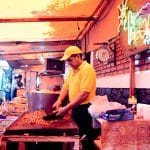 August 23, 2013 Tacomix
August 23, 2013 Tacomix
Update: This spot is sadly no longer open.
Making mixiote takes some effort. On its […] Posted in Mexico City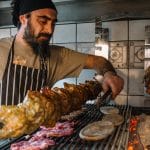 January 23, 2018 Tsiknaboom
January 23, 2018 Tsiknaboom
Update: This spot is sadly no longer open.
Walking down Pallados Street, located a […] Posted in Athens February 18, 2016 Damla Dondurma-Boza
February 18, 2016 Damla Dondurma-Boza
We’re not quite sure what we like about boza, a drink made from slightly fermented […] Posted in Istanbul
Published on June 13, 2014
Related stories
August 23, 2013
Mexico CityUpdate: This spot is sadly no longer open. Making mixiote takes some effort. On its home turf in Central Mexico, the dish is made by taking chicken, beef or mutton that is seasoned with pasilla and guajillo chili peppers as well as flavorings like thyme, cumin, bay leaves, oregano, onion and garlic, wrapping it in…
January 23, 2018
AthensUpdate: This spot is sadly no longer open. Walking down Pallados Street, located a few steps away from the Athens Central Food Market, is like a treasure hunt, one where the riches are the old-time kitchenware stores where past generations of Athenians used to shop for their cutlery and crystal, be it glasses, vases or…
February 18, 2016
IstanbulWe’re not quite sure what we like about boza, a drink made from slightly fermented millet that is popular in Istanbul during the wintertime. The thick beverage tastes like a combination of applesauce and beer-flavored baby food, though we warmly recall the strength it gave us one blustery December day. On that relentlessly rainy morning…














































